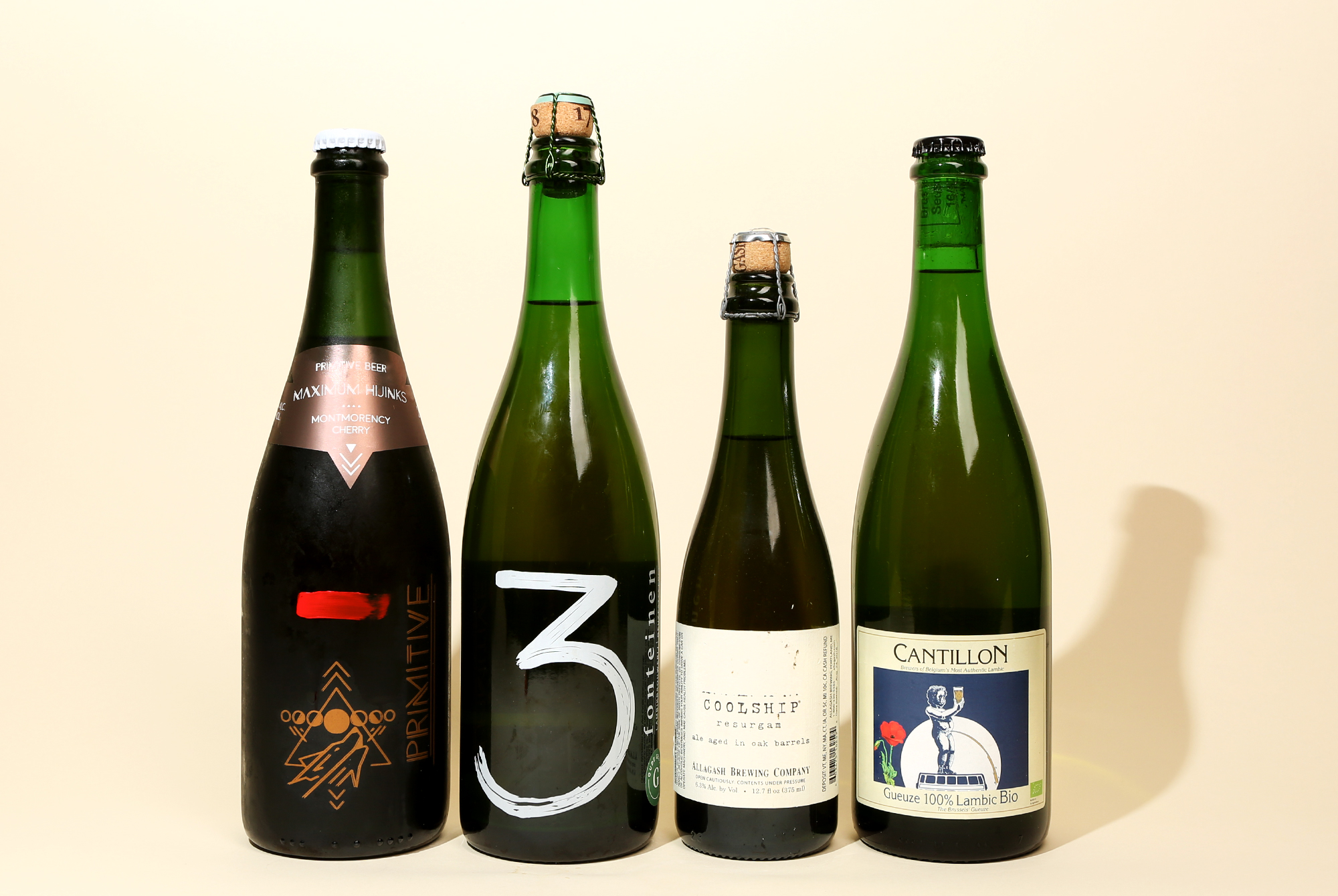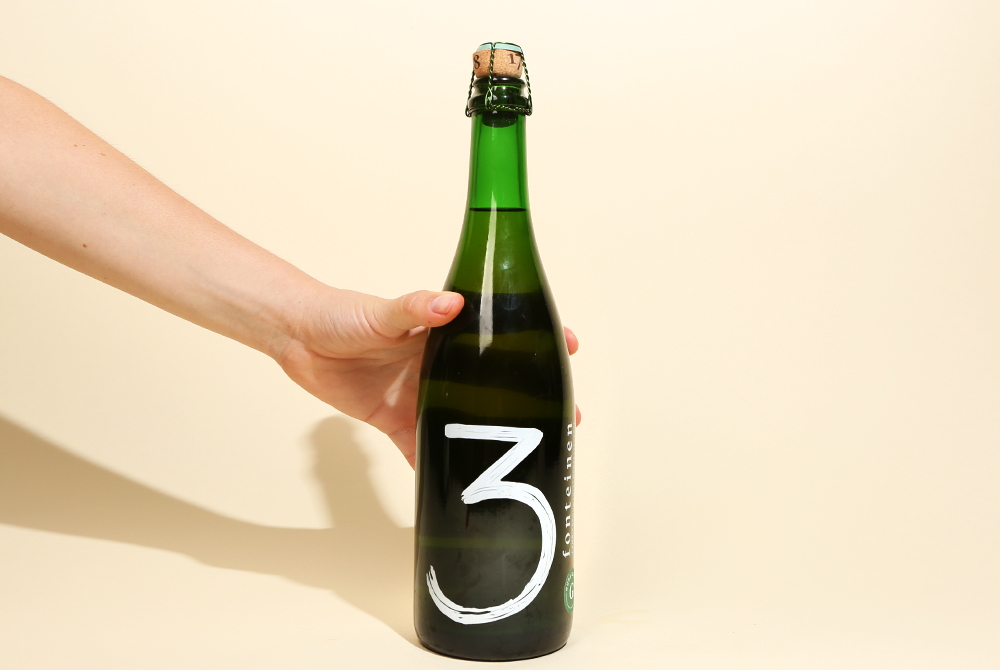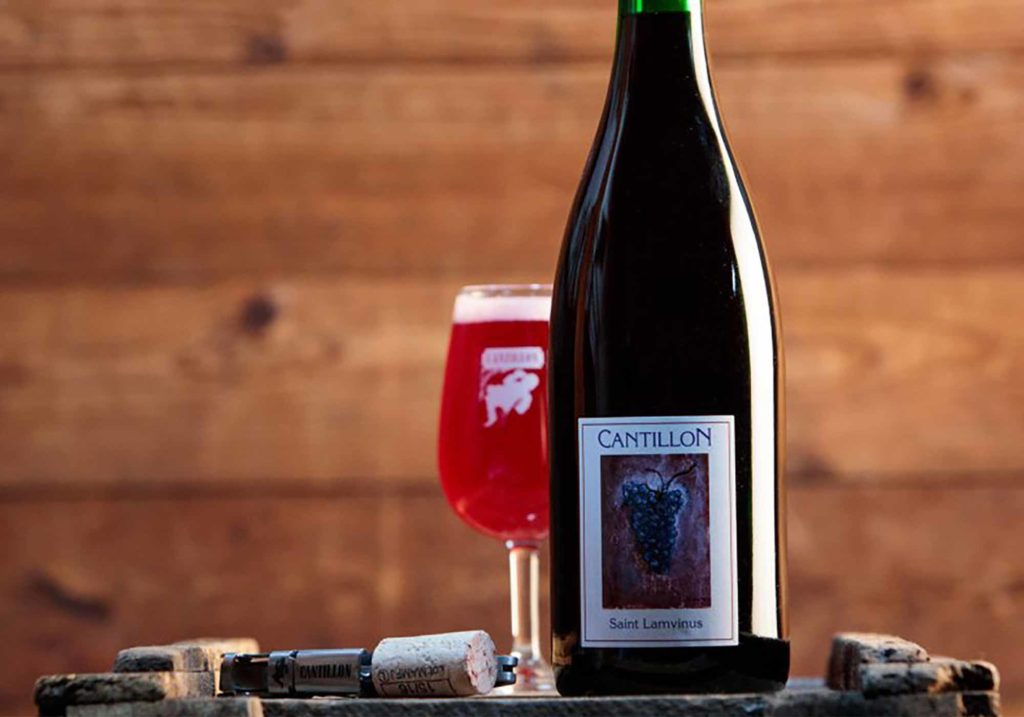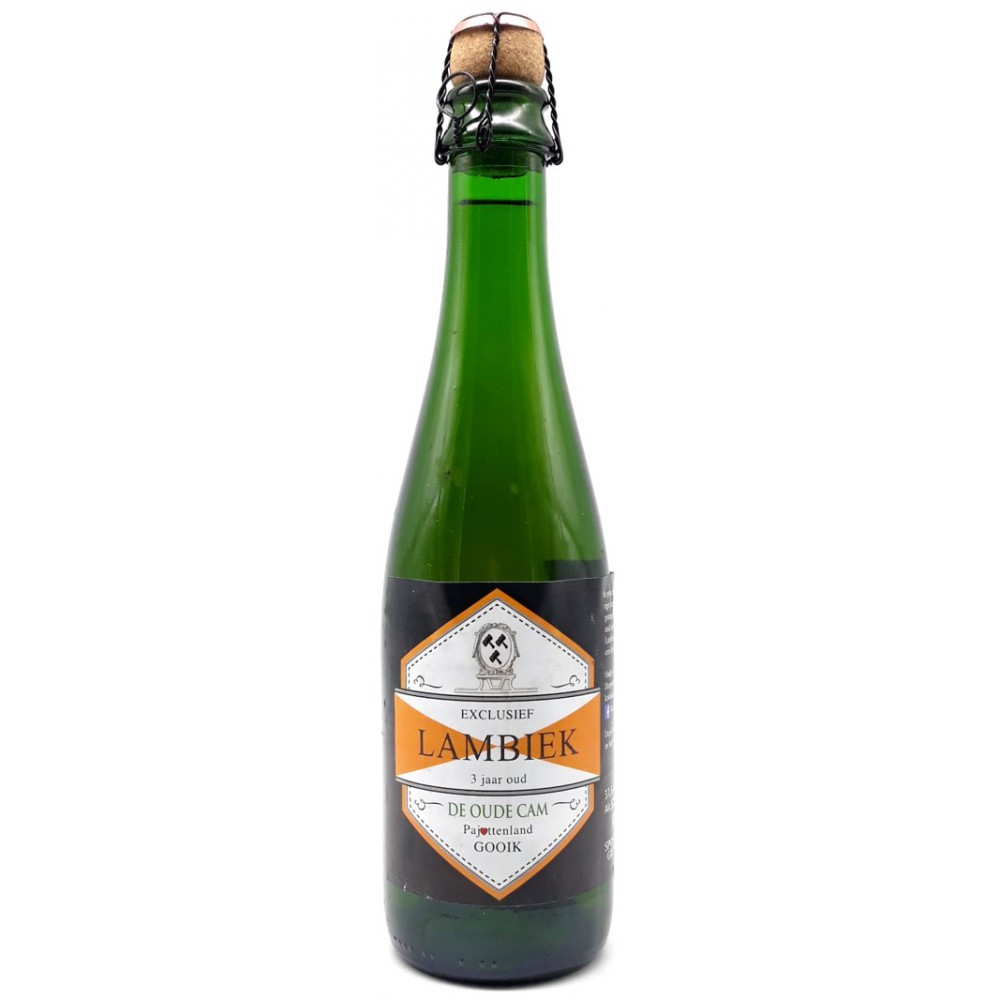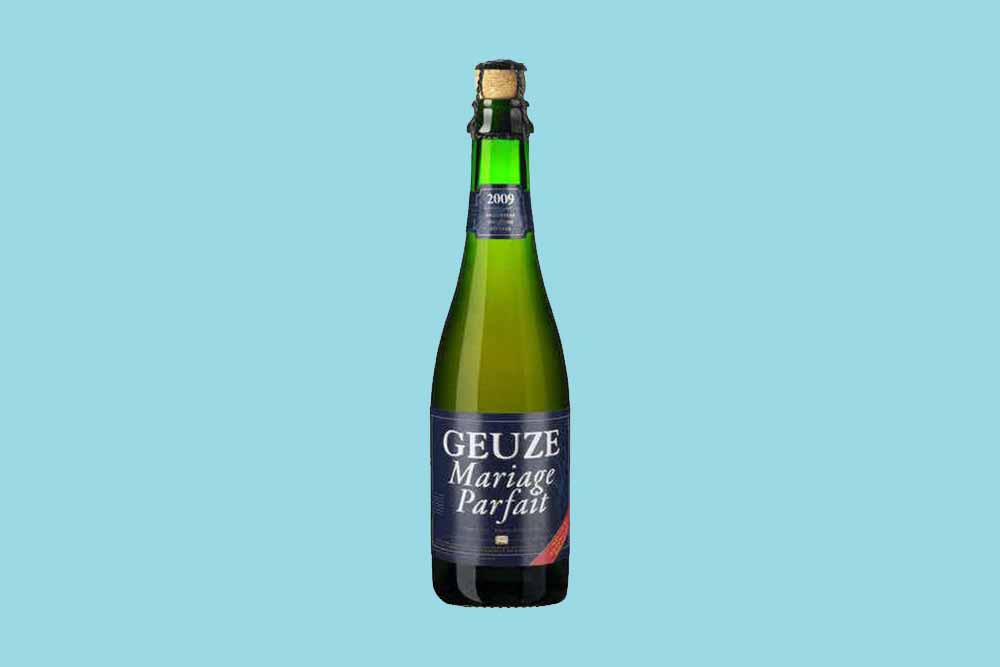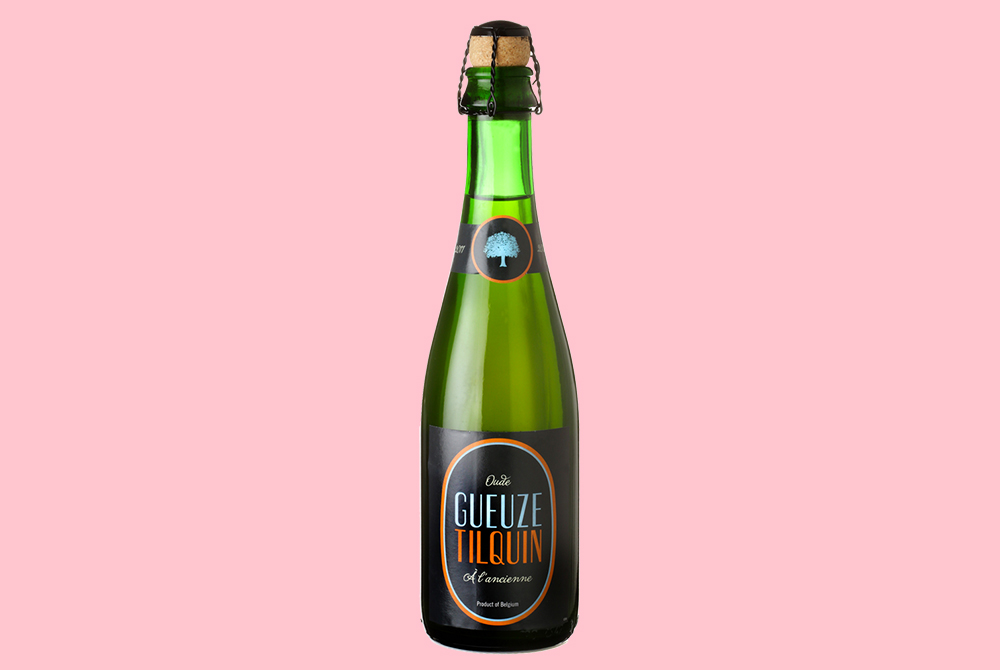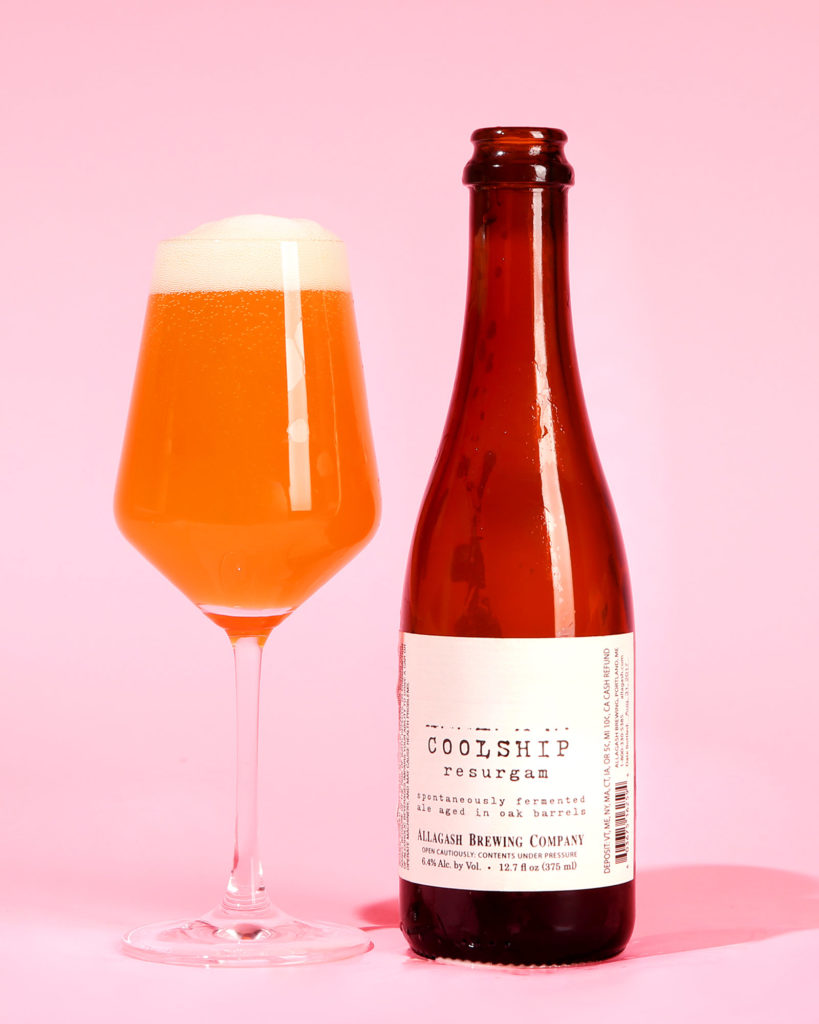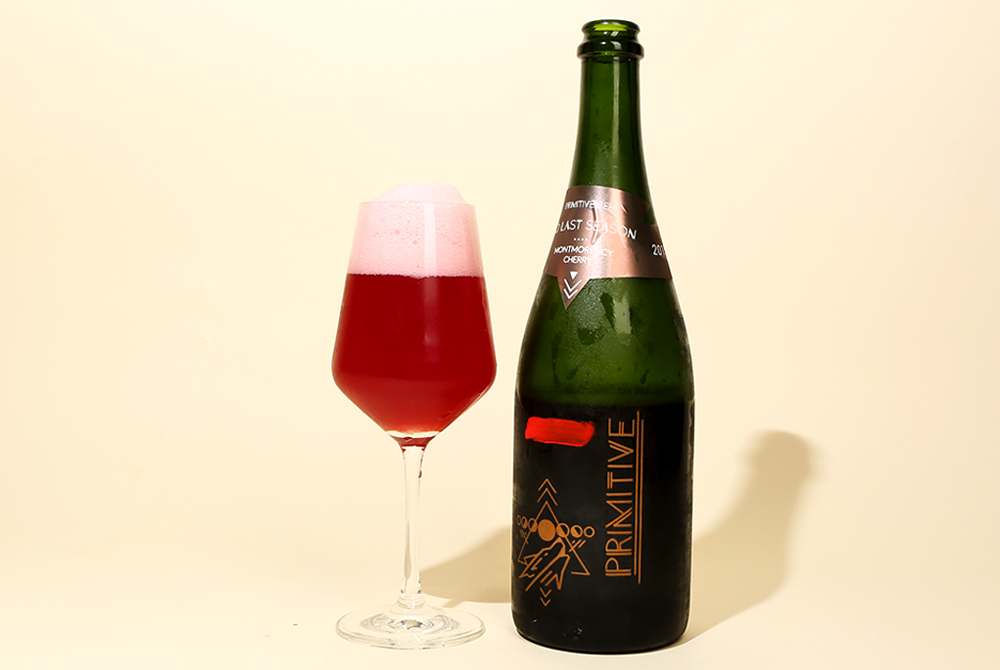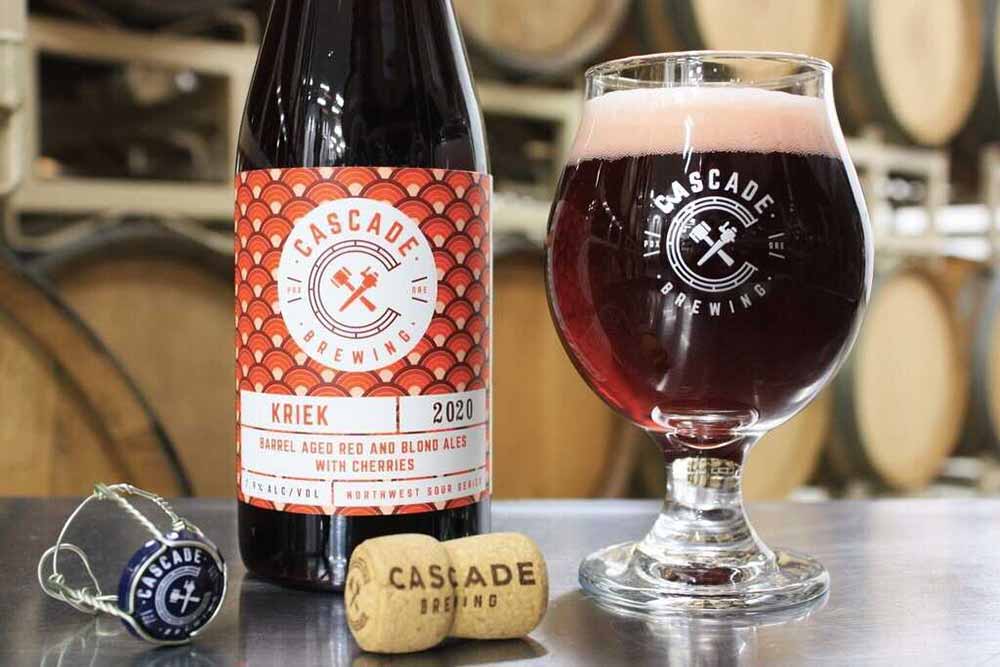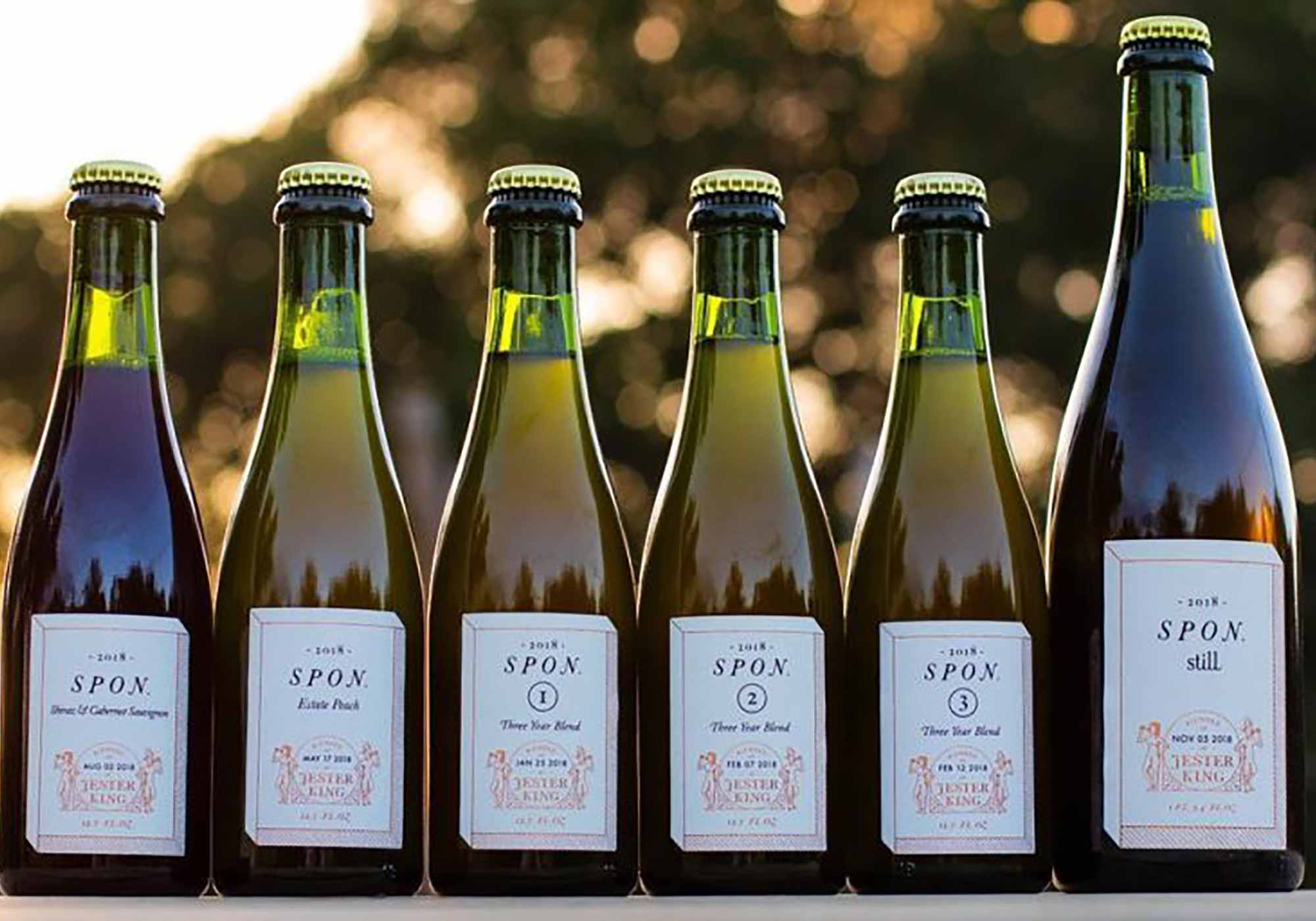Shop
A Beginner’s Guide to Lambic Style Beer
Dive head first into spontaneously fermented beer!
Like Belgian Beers? Read This:
Lambic-style beers have an air of mystery and intrigue. While the style has deep roots and tradition in Belgium, it’s only within the last decade or so that this category of beer has started to emerge in the United States.
American breweries like Allagash, Jester King, and others have developed their interpretations of lambic beer here in the U.S. Known for their funky, fruity, sometimes barnyard-y flavor, lambic beers are characterized by their complexity and balance.
“If horsiness or hay-like or cheesiness is all you’re getting out of lambic, it won’t be a pleasant experience,” says Kevin Martin, the Director of Brewery Operations at Portland, Oregon-based Cascade Brewing (a brewery well known for its sour and fruit beer). “If integrated with the smell of apricots or nuttiness, that balance is the real beauty of lambics.”
Martin likens the flavor of a lambic to fish sauce. One single component can be off-putting, but when you combine the fish sauce with other ingredients in a recipe, “it becomes this unspoken shining star that defines the dish. The sum of the parts is greater than the individual.”
With more breweries embracing this historic style across the country, it’s worth looking at the tradition, brewing methods, nuances, funky flavor profiles, and characteristics that truly define a lambic.
What Is A Lambic Beer?
Defining a lambic has become like craft beer’s existential and philosophical debate. It’s a murky territory with differing opinions about what constitutes a lambic.
For some, geography is the defining factor.
“First and foremost, it is most important to say that lambic is tied to place,” says Brandon Boldt, Co-Founder of Primitive Beer, Colorado’s first exclusively spontaneous, barrel-fermented beer blendery. Specifically, the area of Belgium that includes Brussels, southwest of Brussels, and the Zenne River valley.
“For someone who doesn’t know the style, it is good to make a comparison to champagne,” says Jason Perkins, brewmaster at Allagash Brewing Co. in Portland, ME. According to strict laws, a producer can only use the name champagne if they make the product within the Champagne region of France. If the liquid is from anywhere else, it is only considered sparkling wine. “Because of the name and association with place specifically, lambic should refer to beer made in Belgium, really within greater Brussels. But lambic doesn’t have the same control over the word,” continues Perkins.
A problem that has left the style open to interpretation.
For others, the method and traditional practices genuinely define the style.
How Do You Make a Lambic?
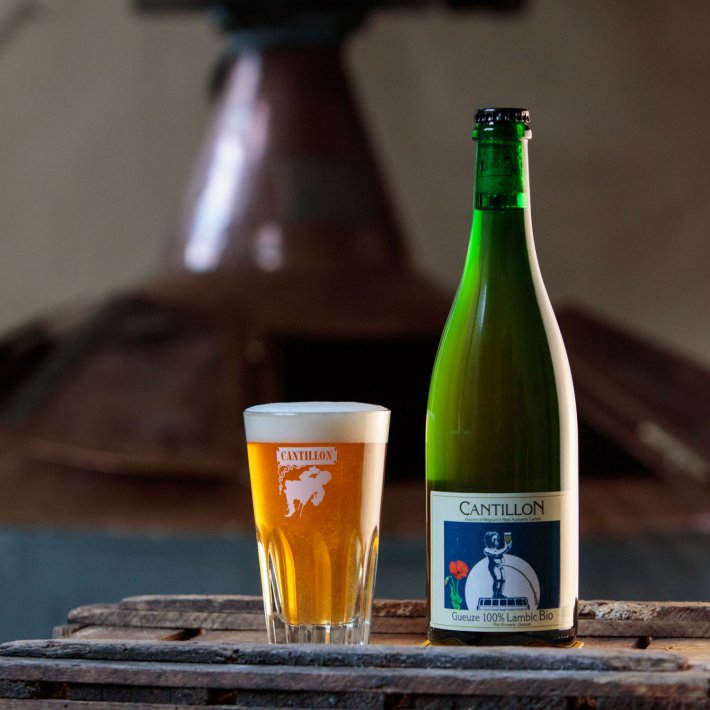
Photography courtesy of Brasserie Cantillon
Take everything you knew about making beer—and throw it out the window. Making a lambic strays from every method of brewing a traditional ale or lager.
While traditional beers go through a gentle mashing process, lambics need a vigorous mash.
Most beers feature fresh hops; lambics use aged hops.
Many beers undergo an hour boil; lambics boil for three or more hours.
While traditional beers use a single strain of yeast, lambics undergo a signature process called spontaneous fermentation, where a brewer exposes the wort, or steeped grain liquid, to the open air, often using a coolship (traditionally spelled koelschip), essentially a big brownie pan vessel, to cool down the beer.
See, throw it all out the window.
The Lambic-Style Beer Brewing Process
At the base, a lambic typically features forty percent unmalted wheat and sixty percent of a base malt such as barley. These grains are vigorously mashed together to create a turbid mash.
The wort from the turbid mash then boils for a long time (what Brandon and his co-founder Lisa Boldt called a marathon boil) with an addition of aged hops. The aged hops help preserve the beer during a long fermentation. You want to keep the preservative qualities of the hops without introducing any bitterness. “In a nutshell, you’re trying to age out the bitterness of hops,” explains Perkins.
Each of these steps prepares the beer for its long fermentation. You want the wort to be chock-full of highly complex and indigestible sugars so that during fermentation, the naturally occurring yeast that finds its way into the beer has something to eat for an extended period to develop a beautiful flavor. “A lot of thought goes into the brew day to create something with longevity,” says Boldt. “We’re building a foundation for the rest of the magic.”
After the extended boil comes the true trademark stamp of the process: spontaneous fermentation. To cool down the wort, one transfers the beer to a coolship. Instead of pitching (or adding a single strain of yeast in a controlled lab environment), you leave the beer to pick up the naturally occurring microorganisms, flora, and bacteria from the environment.
After cooling for upwards of fifteen hours, brewers transfer the beer to a “horny tank” (basically a holding tank) that ensures the microorganisms introduced to the beer at the surface level mix in the coolship into the entire beer.
For the last step, a brewer puts the lambic in barrels called puncheons, aging for one to three years.
Wait, Can You Explain What a Coolship Is Again?
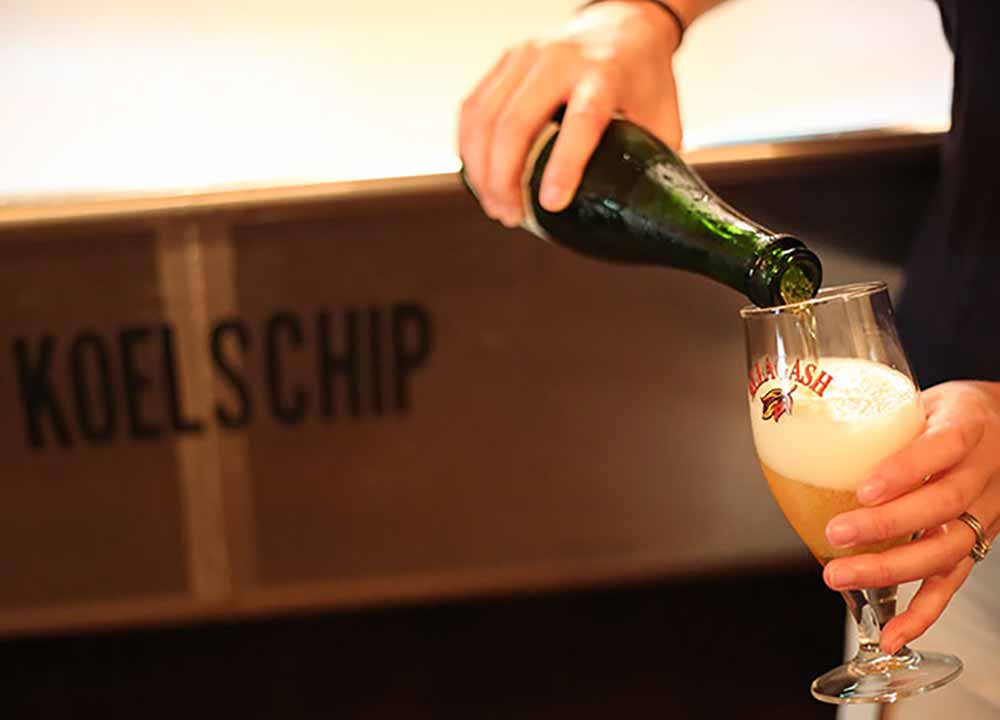
Photography courtesy of Allagash Brewing
Essentially large, shallow troughs that brewers use to cool down beer, coolships have been used way before lambic beer became a style.
For centuries, brewers built crude coolships to cool down beer. People understood the fundamentals of making beer at the time but didn’t understand yeast yet. Eventually, various discoveries around yeast allowed people to understand the nature of bacteria. They introduced new methods to control cooling down beer and fermentation in a closed system with a single yeast strain.
At this point, lambic brewers became the only ones still using coolships.
“Coolships weren’t invented to make lambic,” says Perkins. “But they survived because of lambic brewers.”
Can You Tell Me More About That Spontaneous Fermentation?
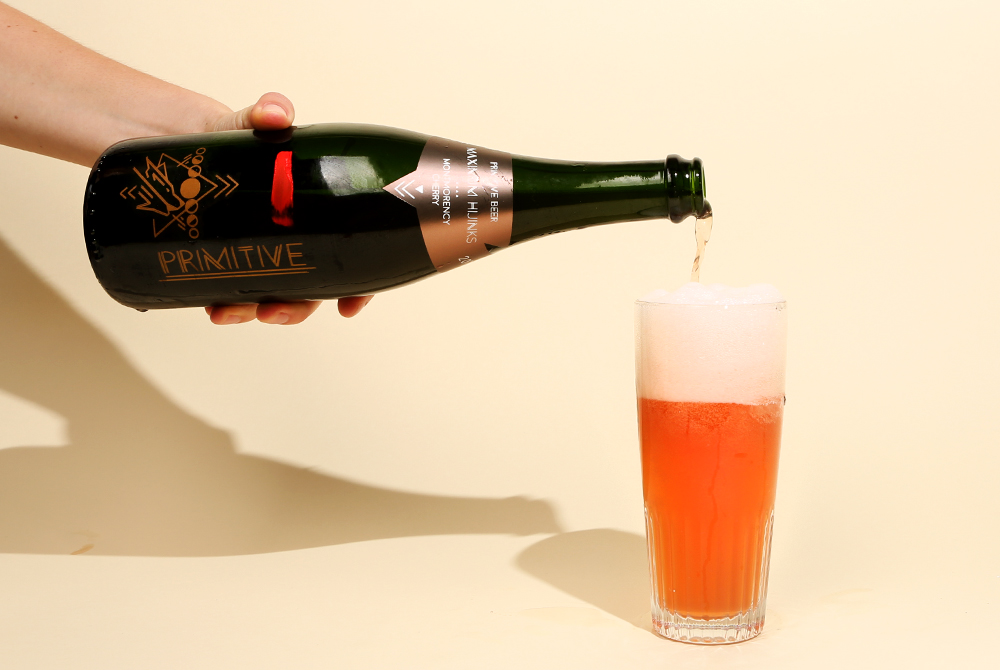
Photography courtesy of John A. Paradiso
“For the laymen, spontaneous fermentation would be exposing your wort to the open air rather than adding a lab-cultured strain or single strain of yeast,” says Cascade Brewing’s Martin.
In short, spontaneous fermentation is like hanging your laundry up to dry outside instead of using a dryer sheet in a dryer. The natural air cools down your clothes and gives them a distinct, fresh scent from the ambient air.
Brewers expose the beer as it’s cooling down to whatever is floating around in the air, enabling a “complex web of life to exist and thrive,” says Boldt.
Spontaneous fermentation usually happens in a specific geographic region and season, usually in cooler climates. “I probably wouldn’t try this in August in Miami,” says Levi Funk, the founder and blender of Funk Factory Geuzeria, which closed in December 2022 and re-opened as Black Rose Blending Company under the guidance of long-time employee Kyle Metz.
And while spontaneous fermentation has this air of mystique, it is pretty simple. “Spontaneous suggests that this process happens instantly and magically,” says Perkins. “And while there is a lot of magic to it, yeast is already naturally occurring in the environment.” Brewers are just taking advantage of Mother Nature’s traditions.
Speaking of traditions.
Can You Make a Lambic Outside of Belgium?
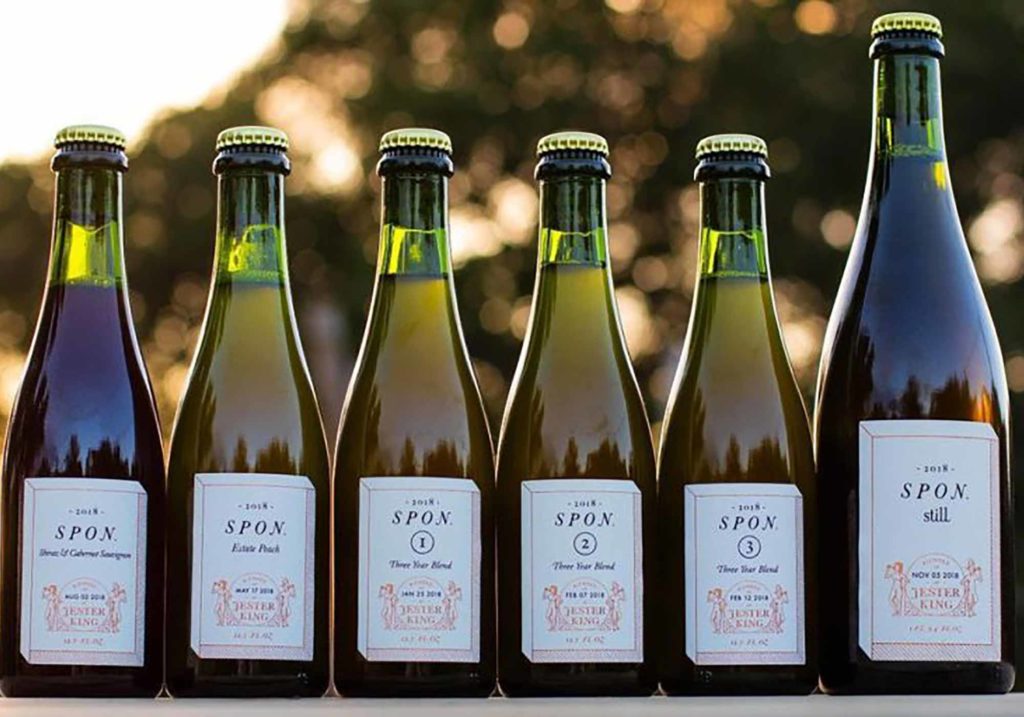
Photography courtesy of Jester King
Most Belgian brewers do not consider spontaneously fermented beer made outside of Belgium—specifically the area around Brussels and the Zenne River valley—true lambics.
But, many American brewers now seek to brew a lambic respectfully.
Funk, who loved Belgian lambics’ balance and complexity, started brewing Belgian-inspired beer on a 1-bbl system in his basement. As consumer palettes caught on, his intricately crafted sours gained popularity. Funk took things one step further.
In 2016, Funk, Jeffrey Stuffings (co-founder of Jester King, an authentic farmhouse brewery committed to mixed culture and spontaneous fermentation in Austin, TX), and James Howat (owner and blender at the now-closed Black Project Spontaneous & Wild Ales) met with a group of Belgian brewers called HORAL (The High Council for Artisanal Lambic Beers), a non-profit organization composed of gueuze brewers and blenders from the Pajottenland and Zenne valley in Belgium.
Their goal: to come up with a definition American brewers could use when producing lambic-style beers that captured the respect of the tradition and the process used by Belgian brewers.
“There is no consensus on a definition of lambic,” says Funk. “Not amongst American brewers and certainly not amongst Belgian brewers. We wanted to give the American brewer who wanted to pursue the style a name they could use to call their beer and to set a production standard. If you’re going to make a lambic, you can’t do it half-assed and still call it a lambic.”
After much debate and discussion, Funk, his lambic-loving compatriots, and HORAL settled on a term: Méthode Traditionnelle.
So, What’s Méthode Traditionnelle?
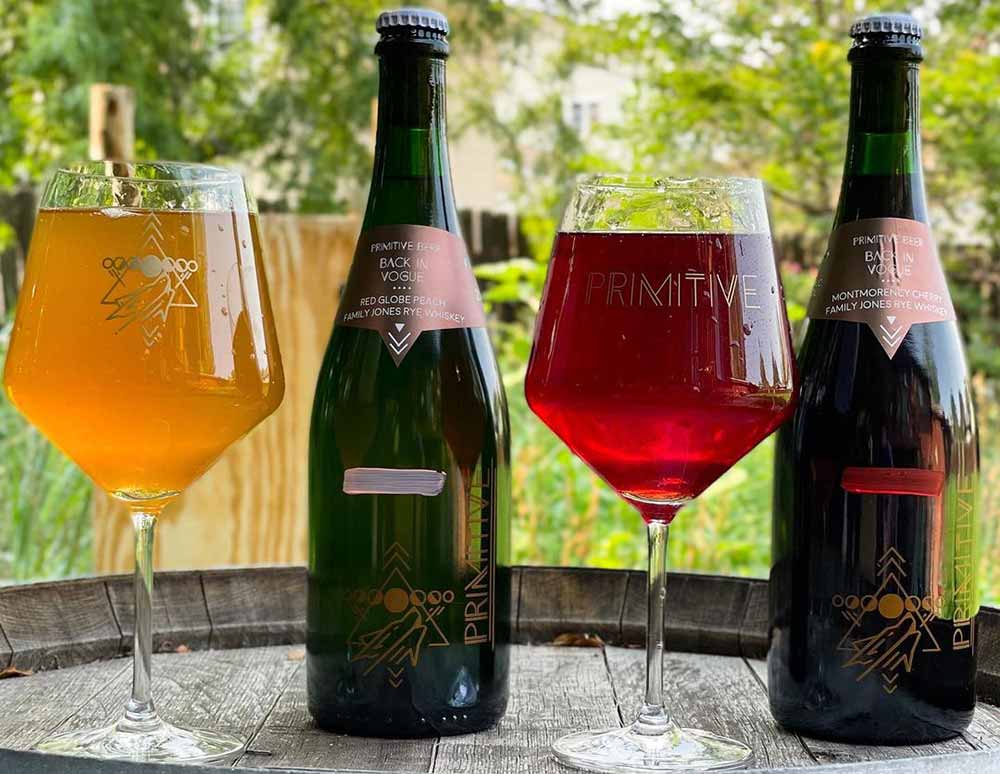
Photography courtesy of Primitive Beer
According to the Funk Factory blog, “Méthode Traditionnelle is designed to refer to spontaneously fermented beers made following the traditional method, but outside the traditional region.” The goal has always been to 1) Provide stylistic terminology for non-Belgian brewers making beer in accordance with the traditional method of producing G(u)euze; 2) Achieve this first goal in a manner that is respectful of and acceptable to the traditional producers in Belgium.
While Funk adopted Méthode Traditionnelle when referencing his lambics, other American brewers consciously avoided using the term lambic.
Another Word For Lambic-Style Beer: Coolship
Perkins says at Allagash, they’ve chosen to name their lambic-style beers Coolship (e.g., Coolship Resurgam, their classic interpretation of a classic gueuze) out of respect for the tradition of the brewing style.
In many ways, we have Allagash to thank for pioneering the style here in America. Back in 2007, no one in the U.S. made lambic-style beers. When Allagash Founder Rob Tod returned from a trip to Belgium, he came up with the idea to build a coolship to see if he could respectfully and traditionally brew the style in Portland, ME.
“Conventional wisdom at the time was that you couldn’t make these beers unless in the magical radius of Zenne around Brussels,” shares Perkins.
A huge success, the experiment spurred Perkins and Allagash to name their line of beers Coolship, refraining from using the term “lambic” because they felt strongly that Belgian lambic brewers, who have championed the style, deserve the right to call it lambic while no one else should.
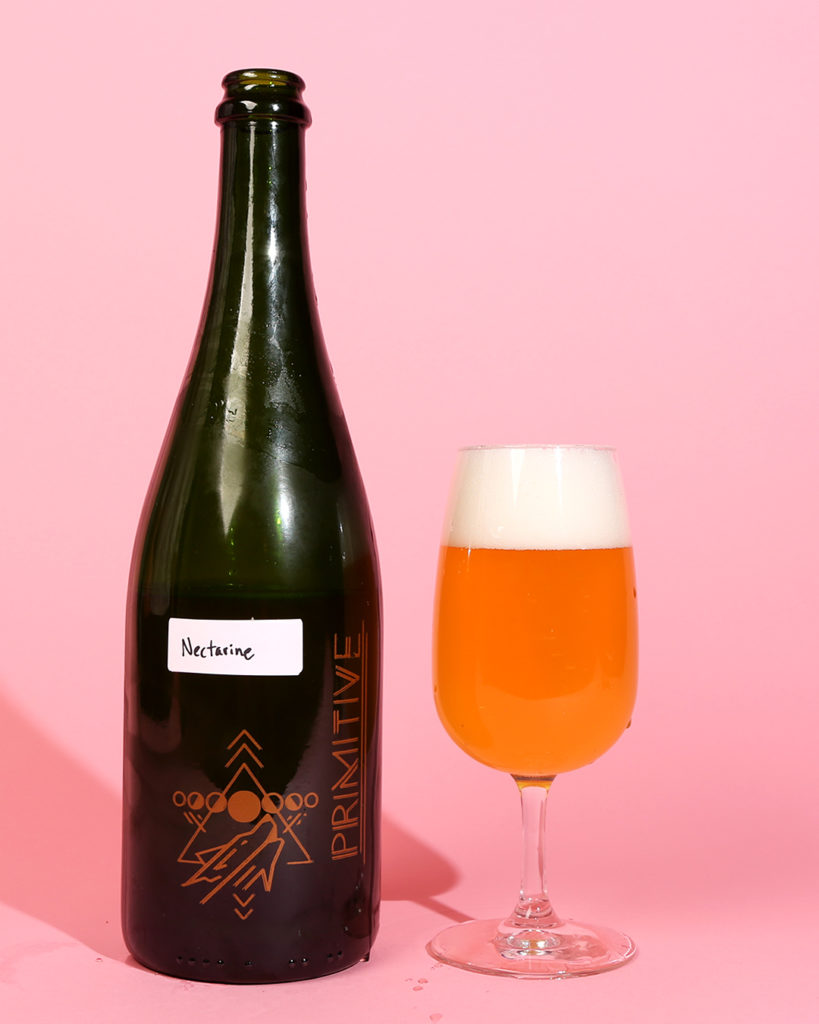
Photography courtesy of John A. Paradiso
Another Word For Lambic-Style Beer: American Spontaneous Beer
Similarly, at Primitive, Lisa and Brandon Boldt follow the steps outlined in the Méthode Traditionnelle but avoid using the term lambic. Instead, they designate their beers as “American Spontaneous Beer.”
“We would love to call it lambic, but we’re not in Brussels, and we feel that is a very important distinction,” says Lisa. “It’s respect for Belgian lambic tradition. Lambic has been around for so long, entrenched in Belgian culture. It’s more than just a drink.”
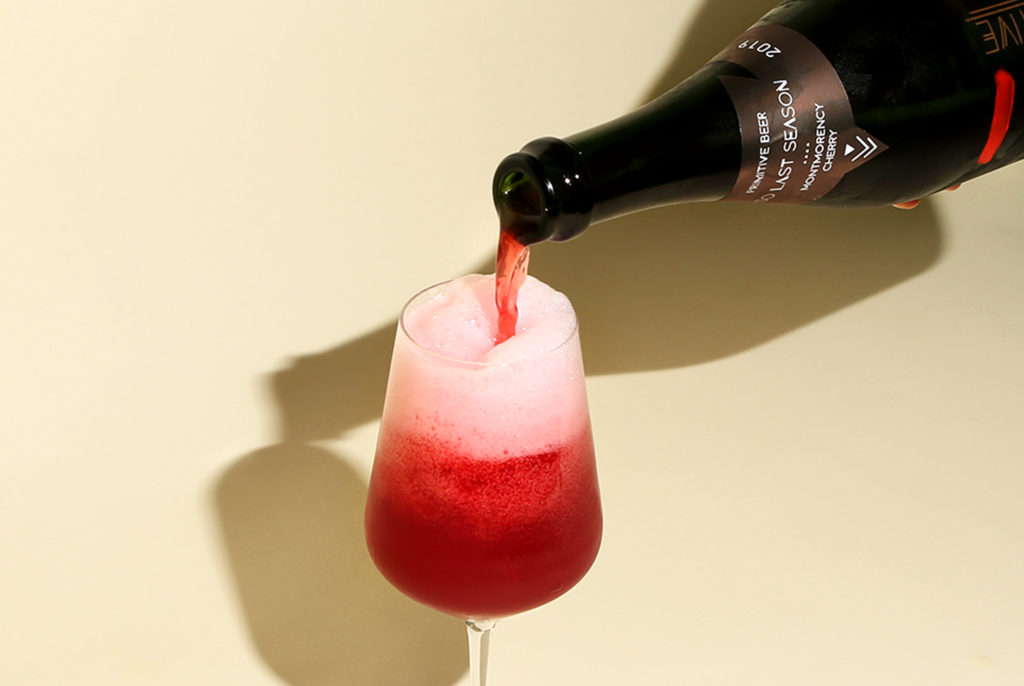
Photography courtesy of John A. Paradiso
Another Word For Lambic-Style Beer: Northwest Sour Ale
Martin also ties the word lambic with to roots of the beer.
“In the United States, we don’t have the long history they have in Europe with wine and beer. We tend to be more liberal with how we use terminology. In Belgium’s older traditions, that terminology is a lot more highly regarded. Coming from the European tradition, the terms mean something specific, and they value protecting those terms.”
At Cascade, they avoid using “lambic” when describing their beer, opting instead for their own designation: Northwest Sour Ale. Especially since the brewery does not use spontaneous fermentation when brewing their sours, Martin says it was imperative for him not to call the style lambic.
Regardless of the debate around designation, most brewers—Belgian and American—can agree on the balanced yet complex flavors that make lambics truly special.
What Do Lambics Taste Like?
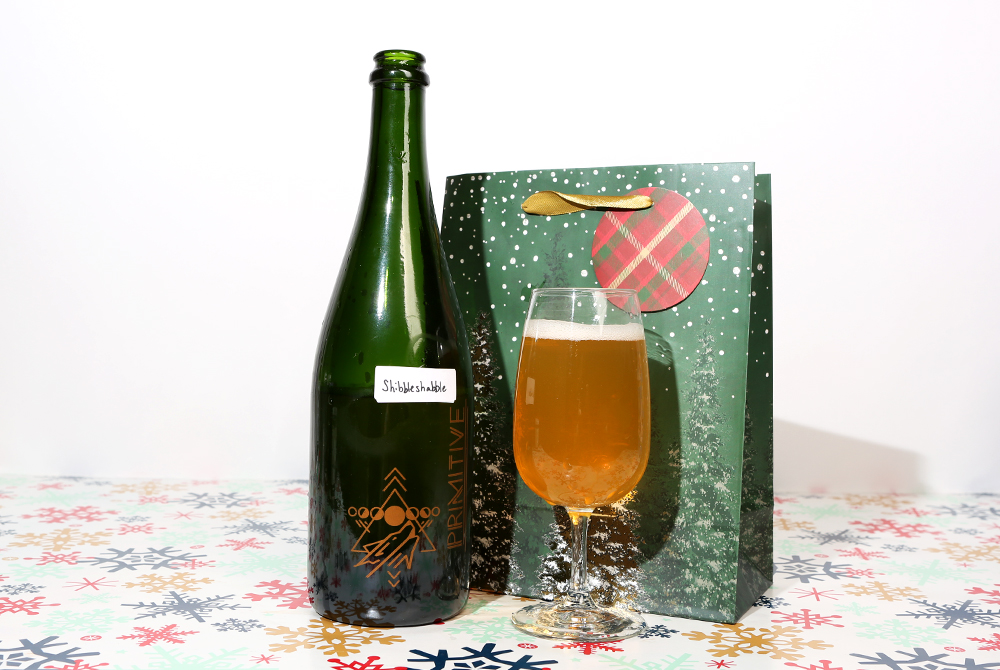
Photography courtesy of John A. Paradiso
Although complicated and convoluted, lambic brewing techniques ultimately create a unique-tasting beer.
“You can get as deep into the weeds about the process as you want, but if you just like how it tastes and don’t want to go down the deep rabbit hole, it’s Spon Spon Bing Bong,” says Lisa, referring to a phrase that she and Brandon came up with to remind people that you can still appreciate the taste of lambics without understanding the intricate process. “We take it seriously,” explains Brandon. “But we don’t expect everyone else to take it seriously to enjoy it.”
Like their nontraditional brewing methods, lambics have very untraditional and complex flavors. “You want a funky, musty, barnyard, and cellar-dirt flavor and aroma, but you also want this bright citrus-lemon component. You want some acidity,” says Funk.
Bottom line: You want balance.
“It’s complex, just like everything else about this beer,” says Perkins. “You’ll get different flavors at different times of aging, so an eight- to twelve-month-old lambic can taste like a rough-around-the-edges hefeweizen while a two- to three-year-old lambic starts to develop more tartness, and you get that barnyard funk, horse blanket, but also some nice fruity components.”
There is a sense of unique, umami qualities to a lambic that can only be understood if you try a few yourself.
Wait, But What about Gueuze, Krieks, Framboises, etc.? Are Those Lambics?
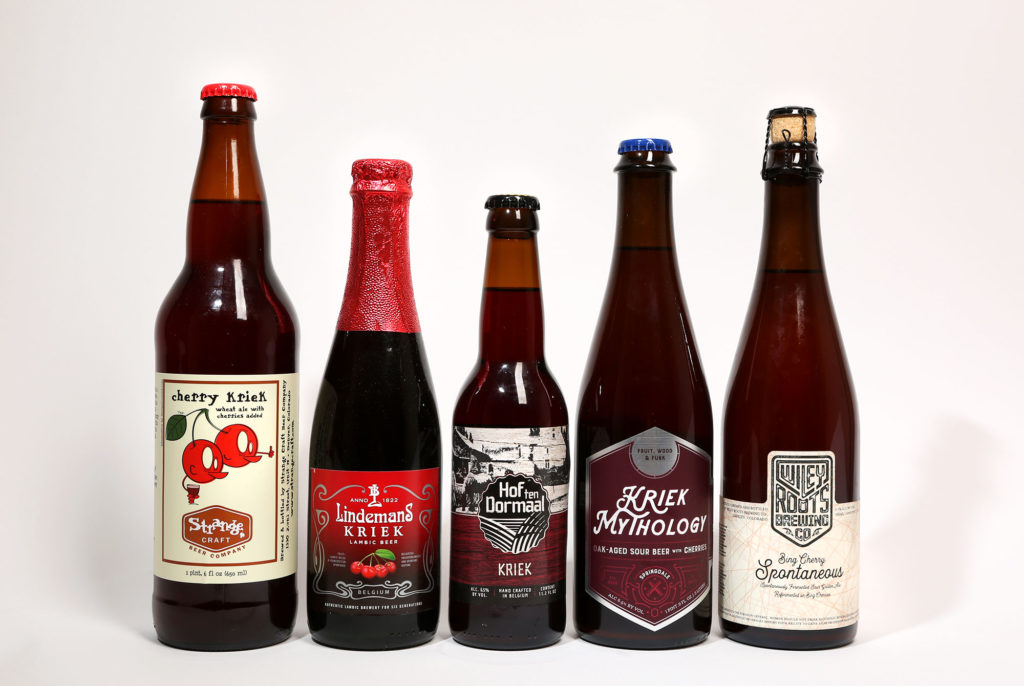
Photography courtesy of John A. Paradiso
Great question!
Lambic is the all-encompassing term for the style. Many lambics are gueuzes, a blend of three different ages of lambic.
But commonly, a brewer will add additional fruit during the fermentation process.
If you add raspberry, the beer becomes a framboise.
Add cherry, then it’s a kriek.
Then you have apple (pomme), peach (peche), and many more.
Where Can I Find a Good Lambic?
Whether you’re entirely new to the category or dipped your toes in the microflora-filled coolship, you’re most likely looking for a few lambics to try yourself. (Especially if you’ve read this whole article!)
We asked Martin, Perkins, and Funk for some suggestions.
Here are their recommendations to get you started on your lambic journey, from the most traditional Belgian versions to accessible lambics you can most likely find in your favorite bottleshop to several of our American favorites.
Traditional Belgian Lambic
Oude Gueuze
Drie Fonteinen — Lot, Belgium
“For a gueuze unfruited lambic, I would one hundred percent say Drie Fonteinen [Oude] Gueuze is the gold standard in my world,” shares Funk. This gueuze is the epitome of Belgian lambic from the only remaining traditional gueuze blender in Belgium.
Saint Lamvinus
Brasserie Cantillon — Anderlecht, Belgium
For a fruited lambic, Brasserie Cantillon in Brussels makes some of the most renowned krieks, framboises, and more. Saint Lamvinus is a fruited Belgian lambic utilizing grapes macerated in Bordeaux barrels.
Funk recommends Saint Lamvinus if you’re already familiar with sour beers and a fan. Perkins also recommends Cantillon for their traditional kriek and a whole line of interesting experimental beers they make using spontaneous fermentation.
Oude Lambiek
Geuzestekerij De Cam — Gooik, Belgium
“This is a one-man operation made by a guy named Carol who is amazingly passionate and sassy,” says Brandon Boldt. “He’s only open on Sundays for three hours. He gives zero fucks, but every one of his beers has terroir.”
Readily Accessible Lambic
Geuze Mariage Parfait
Brouwerij Boon — Halle, Belgium
One of Perkins’ favorites, Boon’s Geuze Mariage Parfait uses a higher portion of older lambic, is pretty readily available and reasonably priced and is one of the best in the world. Lisa Boldt agrees that Boon is true to the style and easy to find.
Oude Gueuze Tilquin à l’Ancienne
Gueuzerie Tilquin — Brussels, Belgium
“I like the balance that owner and brewmaster Pierre Tilquin strikes,” says Martin. He sources his work from multiple breweries around the Flanders region to capture microflora and characteristics from various breweries and blend them to his palate, giving his beers a unique diversity.
American Versions of Lambic-Style Beer to Try
Coolship Resurgam
Allagash Brewing Co. — Portland, ME
Allagash’s classic interpretation of a gueuze, Coolship Resurgam is Perkins’ favorite from their Coolship line. “I like the pure/rawness of Resurgam. It showcases what kind of beer can be created with spontaneous fermentation,” says Perkins.
So Last Season: Montmorency Cherry
Primitive Beer — Longmont, CO
“It’s our nod to Belgian kriek that has this deep ruby color with a pink head,” says Lisa Boldt. “It’s everything you want from a fresh cherry with a little bit of funk below it.”
Cascade Kriek
Cascade Brewing — Portland, OR
Although not made by adhering to the strict standards of a lambic, Cascade’s Kriek is one of the best examples of the beer they produce—Northwest Sour Ale—and inspired by Flemish red-style beers.
Liked this article? Sign up for our newsletter to get the best craft beer writing on the web delivered straight to your inbox.

